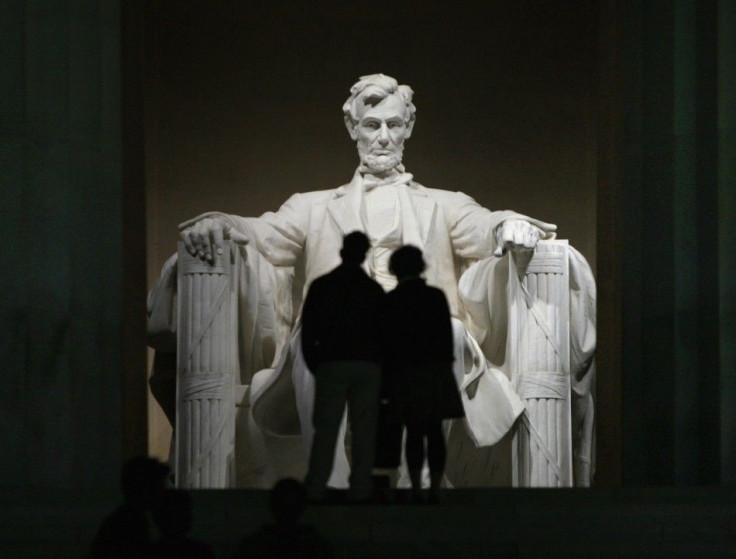Debt Deal: Which Party Won -- Democrats or Republicans?
Analysis

The Senate Tuesday easily passed the debt deal bill, 76-24, and immediately sent it President Barack Obama, who is expected to sign it very soon. When the president does, the world's largest and most-technologically advanced economy will have averted a credit market-constraining default and ended a bitter political chapter.
Most of the fiscal drama to the debt deal saga ended Monday night when the House easily approved the debt deal bill, 269-211. The House was considered the tougher test for the bill, given the larger percentage of very conservative Tea Party members in the chamber.
That's said, Tuesday's Senate vote further calmed U.S. and global stock and financial markets -- which had sold off last week, fearing a credit market-constraining U.S. Government default. The dollar rose slightly versus the euro and pound, and was only slightly lower versus the yen. Meanwhile, the bond market continued to rally, with yield on the benchmark 10-year U.S. Treasury bill falling 0.06 percentage points to 2.69 percent.
Democrats and Republicans compromised late last week after two weeks of nearly-non-stop, bitter rhetoric, angry debate, and brinkmanship -- the likes of which Capitol Hill has not seen since the 1999 impeachment and acquittal of President Bill Clinton.
The debt deal bill raises the U.S. debt ceiling by $2.1 trillion and cuts federal spending by up to $2.4 trillion.
Lawmakers have already largely agreed on caps to annual discretionary spending over 10 years. Officials from both parties say that would save about $1 trillion.
Another $1.4 trillion would be identified by a special 12-member, committee -- six Democrats, six Republicans -- appointed by Congress and have automatic "trigger cutbacks" -- including cuts to popular Medicare and U.S. Department of Defense programs -- if the committee did not undertake the additional "heavy lifting" to enact the second-stage cuts.
Overall CBO, in its official debt deal estimate, said the bill would reduce the budget deficit by $2.1 trillion to $2.3 trillion from 2012 to 2021.
The rationale for the "trigger cuts" argues that the 12-member committee is much more likely to make the cuts if the alternative is deep cuts to preferred programs: Medicare, in the case of the Democrats; Pentagon defense contracts, in the case of the Republicans.
Who Won Debt Deal Crisis?
As the dust settles on the debt deal brouhaha, the Washington community began assessing winners and losers in "insta-analysis" fashion. It's a national pastime in Washington - great fun. Unfortunately, rarely is it accurate. The reality is that it will be months or even qaurters before one can discern who won and who lost during the debt deal crisis.
The reason? We don't know the impact of the federal spending cuts on the U.S. economy.
Supply-side economists, who typically include most Republicans and Tea Party members, argue that with federal spending restrained, and the U.S. having taken the first step toward balancing its budget, corporations will now invest and hire employees en masse, because the problem of "Washington policy uncertainty" will have been eliminated.
Conversely, Keynesian economists, who typically include most Democrats, argue that cutting federal spending amid a period of weak demand and already sluggish private-sector hiring, will only slow the U.S. economy more, resulting in rising unemployment.
As evidence of the above, the Keynesian economists cite the 'mistake of 1937' when the Republicans did basically what the GOP did in 2011: after FDR's New Deal provided desperately-needed stimulus during the Great Depression of the 1930s, unemployment plunged, but Republicans, fresh off a 1936 Congressional win, pressured FDR for and got spending reductions in 1937.
The result? The recovering U.S. economy slowed, and unemployment started rising again, and continued rising until FDR saw his mistake, and resumed New Deal stimulus, at which point growth re-accelerated again. Later, in 1941 U.S. Government spending during the mobilization for World War II would finally pull the U.S. out of the depression for good.
Republicans counter that the 1937 case study is not relevant in today's technology-intensive, more-nimble economy: essentially the GOP argues, "this time it's different. Now that federal spending is cut, the jobs will be created in the millions. Just wait and see."
Political/Public Policy Analysis: In other words, it with take six to nine months to determine who the winners and losers are in the debt deal crisis, with the ultimate arbiter being job growth and the U.S. economy. The U.S. unemployment rate has been elevated for more than two years and stands at a ghastly 9.2 percent.
If the U.S. economy starts adding 150,000 and 200,000 and 250,000 new jobs month, Congressional Republicans and supply-side economics will have been vindicated.
If, however, the U.S. economy, already growing an anemic 1.9 percent rate, slows even more, the Democrats can counter with, "we're following the same pattern as the economy did in 1937. Time for more fiscal stimulus."
Stay tuned...
© Copyright IBTimes 2024. All rights reserved.





















